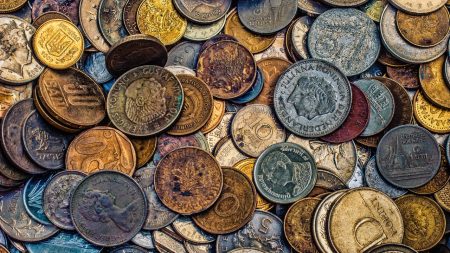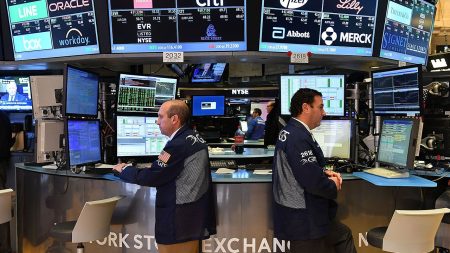Closed-end funds (CEFs) are my No. 1 income plays for a reason that goes beyond their huge dividends: We can tap these off-the-radar (for now!) funds for big price gains, too.
We do this in my CEF Insider service using a time-tested CEF tactic: Buy CEFs trading at discounts to net asset value (NAV, or the value of their portfolios), then sell them at par or, better yet, a premium.
This isn’t rocket science: We’re following the oldest investor play there is: Buy low and sell high! To do it, we’re letting the discount to NAV, a critical CEF metric, be our guide.
Let’s zoom in on two CEFs to see the power of a closing discount in action. Then we’ll pull back and talk about an outside force—the Federal Reserve—that’ll likely keep CEFs’ discounts closing, and prices rising, for the next couple years, at least.
ASG Clobbers Stocks (Powered By Its Closing Discount)
The Liberty All-Star Growth Fund (ASG), as the name says, is a growth stock–oriented CEF. It’s unique in that it holds stocks of all sizes, grouped into large-cap-growth, mid-cap-growth and small-cap-growth buckets, and has a manager for each one.
That does not result in high fees, with ASG’s expense ratio at 1.13% as I write this, reasonable for a CEF.
This setup gives ASG an interesting collection of stocks, from well-known growers like Visa (V) and Mastercard (MA) to lower-profile names like Glaukos Corp. (GKOS), a maker of products for eye conditions.
We like ASG because it moves in and out of stocks like these, handing us the profits as dividends. As a result, we get most of our return in cash, due to the fund’s 8.5% dividend, which has grown by 50% in the last decade. Add in price gains and ASG has returned nearly 150% in that time.
ASG also trades at a 10% discount NAV to as I write this, making it cheaper than it’s been in nearly a decade—including the pandemic selloff!
Anyone who bought ASG when its discount was this low in late 2018 did great, beating both the S&P 500, represented by the benchmark index fund in blue below, and the NASDAQ (in orange).
And remember, ASG shareholders got that big dividend the whole time.
QQQX Turns Tech Gains Into a 6.8% Payout (With Upside)
Speaking of the NASDAQ, let’s shift to tech and the Nuveen NASDAQ 100 Dynamic Overwrite Fund (QQQX), a 6.8%-yielder sporting an 11% discount. That’s an intriguing opportunity given the run tech stocks have been on and the fact that QQQX has traded close to par for most of the last decade.
Anyone who watched QQQX’s discount and bought when it appeared at the start of the pandemic would’ve made a 31% profit in two months, outrunning index funds for both the S&P 500 (in orange below) and NASDAQ (in purple).
This chart is profound because QQQX, which holds the big names in the NASDAQ—Apple (AAPL), Alphabet (GOOGL) and the like—sells call options on its holdings. That’s a smart way to generate income and does a lot to support the 6.8% payout. But this should cause the fund to underperform during very volatile times like, say, a pandemic.
Even so, QQQX outperformed because investors had sold it off, expecting it to lag when the pandemic started. That left it oversold and ripe for contrarians to jump in and profit.
These opportunities exist everywhere in CEFs. And these inefficiencies are getting more prominent thanks to the Federal Reserve.
To explain why, consider the discounts on QQQX and ASG, which, as we just mentioned, have gone to levels not seen since the worst of the pandemic panic, and have just kind of stayed there.
That’s because many mainstream investors have lost interest in CEFs since the Fed aggressively hiked interest rates. Now that savings accounts and CDs are offering 5%+ yields, a lot of investors have sold off their CEFs, thinking these funds’ 8% average yields aren’t high enough to compete with the 5% savings accounts.
Of course, that makes no sense. Eight percent is obviously better than 5%, and both QQQX and ASG crush savings accounts, thanks to their compounding.
In fact, for every dollar invested in a CD, you’re losing about 95 cents in future returns over the next decade, going by what QQQX and ASG have done over the last decade.
And while the market isn’t giving CEFs much attention, that won’t last. Already the Financial Times is publishing columns by star writers who are openly saying things like “Investment trusts remain a mystery to me.” (Investment trusts are what CEFs are called in the UK) and are actively asking readers to explain these funds! The conclusion of the article linked above is important:
“I have received more emails since last week’s column than for anything I have written on crypto or jewellery. The breadth of financial and emotional attachment to closed-ended funds has astounded me.”
Obviously, there is a huge, but hidden, market of people who love CEFs and the big yields and profits they offer. As CEFs get more attention, expect this unusually long period of bigger discounts, like those on QQQX and ASG, to vanish, setting up today’s buyers for strong profits.
Consider also that the Fed has made it clear that a rate cut is coming, and more will come next year. That will mean CDs and high-yield savings accounts will yield less and less, and investors in those accounts will seek out higher-yielding alternatives. You can bet that discounted, 8%+ yielding CEFs will grab their attention.
That means CEF discounts will likely get smaller in 2025, and premiums will be more common in 2026 and beyond. Anyone who buys now will be in a great position as this trend unfolds.
Michael Foster is the Lead Research Analyst for Contrarian Outlook. For more great income ideas, click here for our latest report “Indestructible Income: 5 Bargain Funds with Steady 10% Dividends.”
Disclosure: none
Read the full article here
















